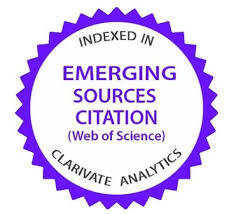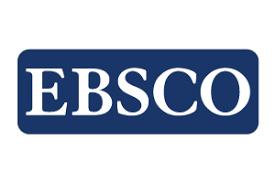Un paradigma Educativo Intercultural para impulsar la Paz y el Desarrollo Local de la Comunidades Originarias. El Programa de Desarrollo Sustentable de la Universidad Intercultural del Estado de México (UIEM)
DOI:
https://doi.org/10.35197/rx.08.03.2012.01.sgPalabras clave:
desarrollo sustentable, educación intercultural, interculturalidad, comunidades originarias, pazResumen
Los problemas que existen en las comunidades originarias mazahuas y otomíes del valle de Toluca e Ixtlahuaca-Atlacomulco son varios. Principalmente, en esta región hay violencia cultural, étnica y económica. Ésta se da por falta de acceso a servicios de infraestructura, acceso a la educación y a la justicia. Consideramos que la educación es una vía para aminorar estos problemas.
La presencia de la Universidad Intercultural y de la Licenciatura en Desarrollo Sustentable, en la región mazahua-otomí ha comenzado a impactar de manera positiva en algunas comunidades y organizaciones de la sociedad civil. Esto ha sido a través del modelo educativo intercultural y bajo los principios del Desarrollo Sustentable. El presente trabajo, describe algunas experiencias de la División de Desarrollo Sustentable en algunas comunidades de la región. Al final reflexionamos cómo la sustentabilidad es un camino para la construcción de la paz.
Descargas
Citas
Azar, C. et al. (1996). -Socioecological indicators for sustainability-. En
Ecological economics, vol. 18, num. 2.
Casillas y Santini (2009), Universidad Intercultural. Modelo Educativo,
México, SEP-CGEIB
Ciudades y Gobiernos Locales Unidos (CGLU) (2010) La cultura es el cuarto pilar del desarrollo sostenible, Ajuntament de Barcelona Institut de Cultura, Barcelona, España.
Enkerlin, E. et al. (1997) ¿Un nuevo paradigma? Ciencia ambiental y
desarrollo sostenible. México, International Thomson.
Fernández García Ricardo (2011) La dimensión económica del Desarrollo
Sostenible, Editorial Club Universitario, San Vicente (Alicante) España.
Foladori, G. (2002), -Avances y límites de la sustentabilidad social-en Economía Sociedad y Territorio, , Vol. III, No. 12, pag. 621, 638. El Colegio Mexiquense, A.C.
Fornet- Betancourt, Raúl (2009), Interculturalidad en procesos de subjetivización, México, SEP-CGEIB.
( 2007) Sobre el concepto de interculturalidad. México,
SEP-CGEIB.
Olivé León (2006) Interculturalismo y justicia social, México Nación Multicultural-programa universitario, UNAM, México.
López, Luis Enrique (2009) 3er Encuentro Regional sobre Educación Superior Intercultural de América Latina y El Caribe.
Martínez Montiel, Luz María (1994) Presencia africana en México, México, Consejo Nacional para la Cultura y las Artes (Conaculta).
Mato, Daniel (coord.), (2008) Diversidad cultural e interculturalidad en educación superior. Experiencias en América Latina, Caracas, IESALC-UNESCO. Mato, Daniel (coord.),(2009), Instituciones Interculturales de Educación Superior en América Latina. Procesos de construcción. Logros, Innovaciones y
Desafíos, Caracas, IESALC-UNESCO.
Mato, Daniel (coord.), (2009) Educación Superior, Colaboración Intercultural y Desarrollo Sostenible/Buen Vivir. Experiencias en América Latina, Caracas, IESALC-UNESCO.
Mazabel Davisón y Manuel Romero (2010) La dimensión social de la sustentabilidad en sistemas hidroagrícolas, Universidad de Guanajuato, Campus Guanajuato- División de Ciencias Sociales y Humanidades, Guanajuato México.
Quintero Soto y Carlos Fonseca (coord.) (2011) Dimensiones, económicas, sociales e instituciones del desarrollo Sustentable, Miguel Ángel Porrua, México.
Sandoval Forero Eduardo Andrés (2004) Universidades Indígenas: otros saberes, disponible en línea: http://www.insumisos.com/lecturasinsumisas/ UNIV%20INDIGENA%20MEXICO.pdf, consultado el 5 de junio del 2012.
(2012) Estudios para la paz, la interculturalidad y la democracia, revista Ra Ximbahi coedición ALAS, publicación cuatrimestral, Vol. 8, Num 1, Enero-Abril, UAIM, los mochis, Sinaloa.
Toledo, V.M., Alarcón, P. Moguel, M.Olivio, E., Leyequien y A. Rodriguez (2002) Biodiversidad y Pueblos Indios, en Revista Biodiversitas, año 7, núm 43, Julio de 2002, boletín bimestral, CONABIO, México.
Descargas
Publicado
Cómo citar
Número
Sección
Licencia
Derechos de autor 2012 Saúl Alejandro García, Mindahi Crescencio Bastida Muñoz

Esta obra está bajo una licencia internacional Creative Commons Atribución-NoComercial 4.0.
Usted es libre de:
- Compartir — copiar y redistribuir el material en cualquier medio o formato
- Adaptar — remezclar, transformar y construir a partir del material
- La licenciante no puede revocar estas libertades en tanto usted siga los términos de la licencia
Bajo los siguientes términos:
- Atribución — Usted debe dar crédito de manera adecuada , brindar un enlace a la licencia, e indicar si se han realizado cambios . Puede hacerlo en cualquier forma razonable, pero no de forma tal que sugiera que usted o su uso tienen el apoyo de la licenciante.
- NoComercial — Usted no puede hacer uso del material con propósitos comerciales .
- No hay restricciones adicionales — No puede aplicar términos legales ni medidas tecnológicas que restrinjan legalmente a otras a hacer cualquier uso permitido por la licencia.








